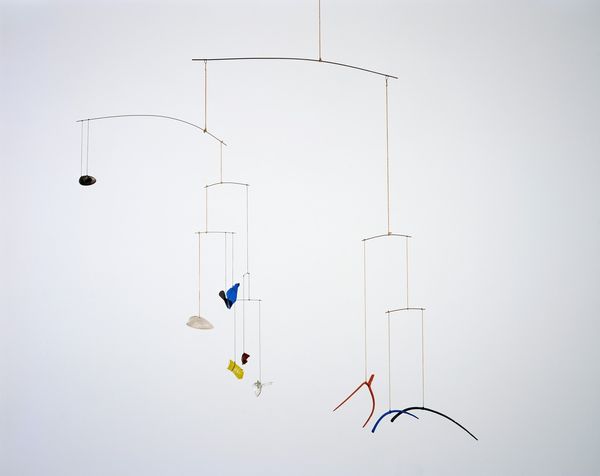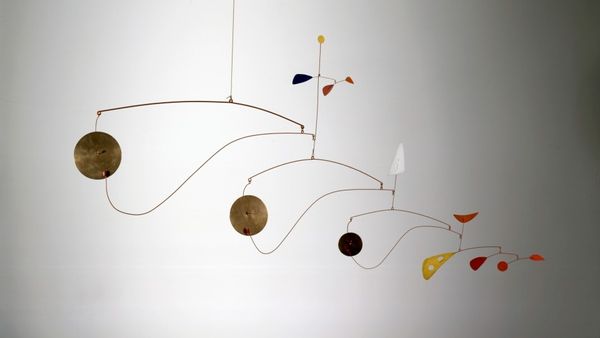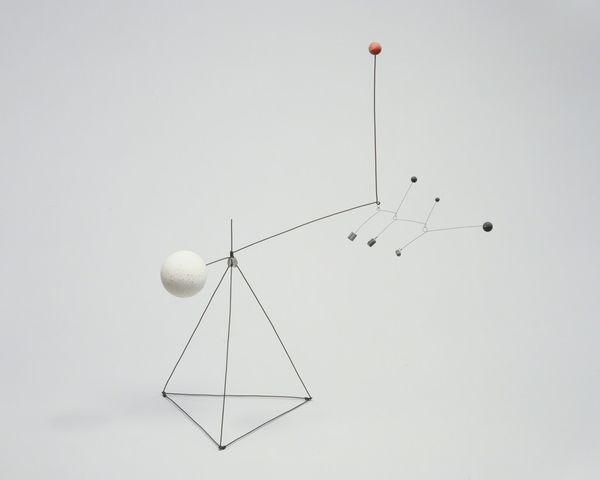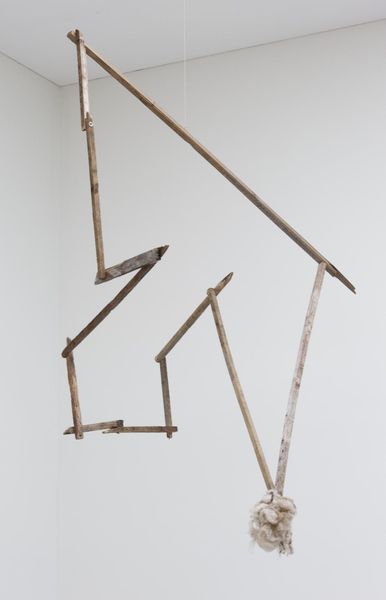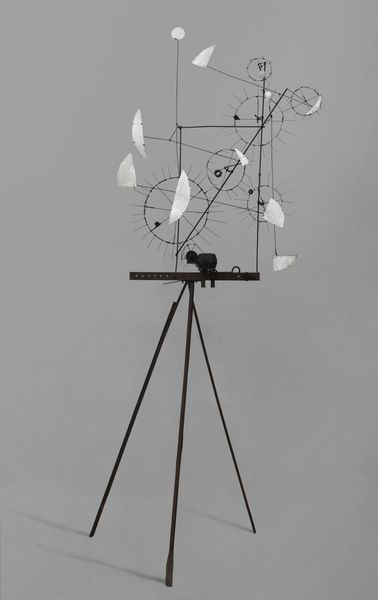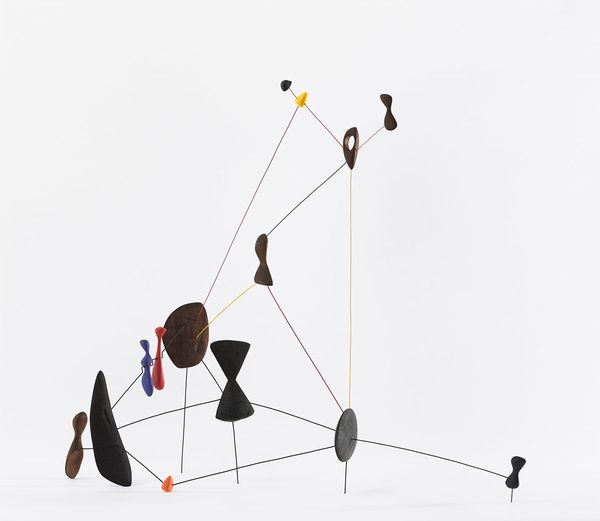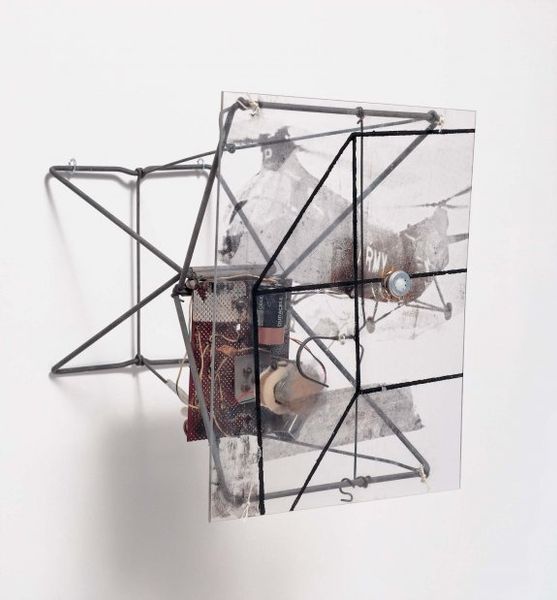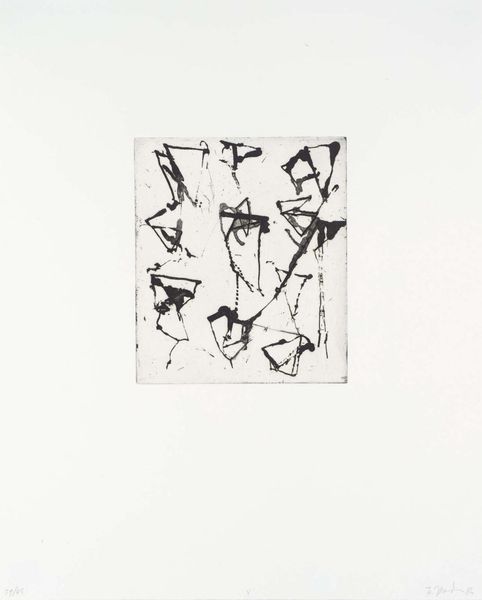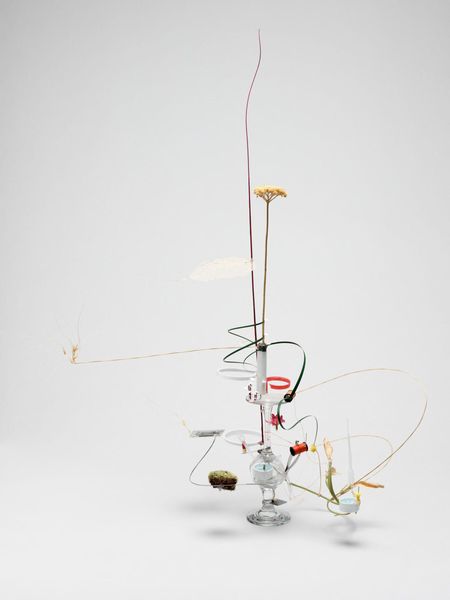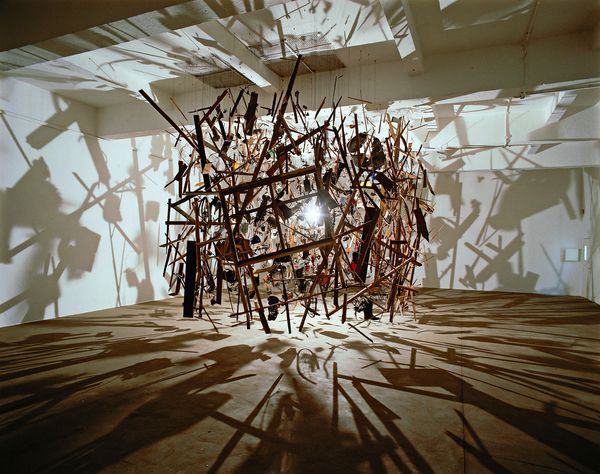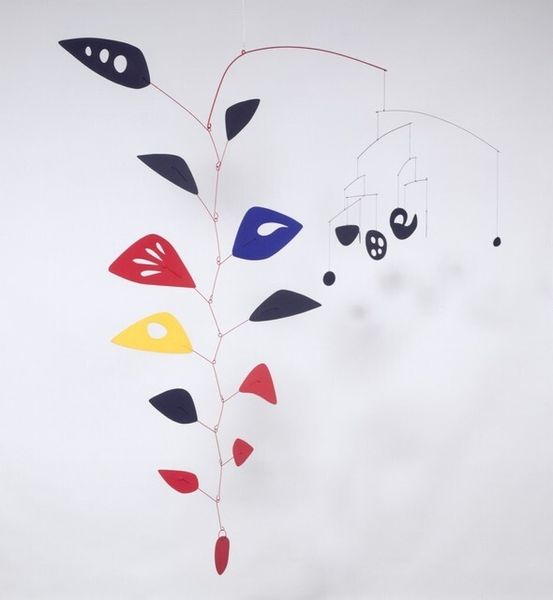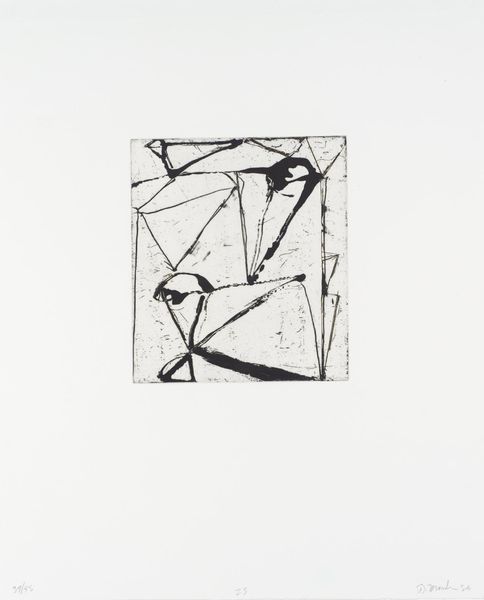
metal, sculpture, mobile
#
abstract-expressionism
#
kinetic-art
#
metal
#
geometric
#
sculpture
#
mobile
#
abstraction
Dimensions: overall: 101.6 x 91.4 x 86.4 cm (40 x 36 x 34 in.)
Copyright: National Gallery of Art: CC0 1.0
Curator: This is Alexander Calder’s "Tower with Pinwheel," created in 1951. Calder, of course, is renowned for his pioneering work in mobile sculpture, and this piece is a particularly fascinating example. It's constructed from metal. Editor: Well, isn't that something? It gives me this airy feeling, like a complex geometric kite floating just out of reach. The balance is wild. Curator: Balance is absolutely key to understanding Calder. His mobiles aren't just aesthetically pleasing arrangements, but carefully calculated exercises in equilibrium. There's a wonderful interplay of tension and release, isn't there? It is interesting to consider how it all stays in the air. Editor: Yes, definitely. I imagine he tinkered for hours getting those little metal shapes just so. But it's not cold, or overly engineered. The materials are honest; I love that you can see the joins, the points of connection. You realize his process somehow, maybe his thinking process... Curator: Precisely. And it is a key process considering that, in many ways, Calder was redefining sculpture itself. The historical emphasis had always been on mass and volume, works planted firmly on the ground. Calder introduced lightness, movement, the element of chance. It also reflects this move in thinking that occurred because of modernism at the time. Editor: True! There's a vulnerability to it. If it breaks, there is the recognition of humanity... That freedom and vulnerability resonate with me now. Almost makes me think of precariousness with grace, or beauty out of vulnerability and that tension is pretty intense in all of us in reality. Curator: Very well put. Its apparent simplicity belies the sophistication and complexity involved, not just in terms of the engineering but of its art-historical implications. Editor: Looking at it like this helps see something entirely new in a "classic," thank you for shedding light on this. It might be basic, but without knowledge it becomes impossible. Curator: It has been a pleasure. I trust the listeners have gained a new view too of Calder's innovative world of art.
Comments
No comments
Be the first to comment and join the conversation on the ultimate creative platform.
